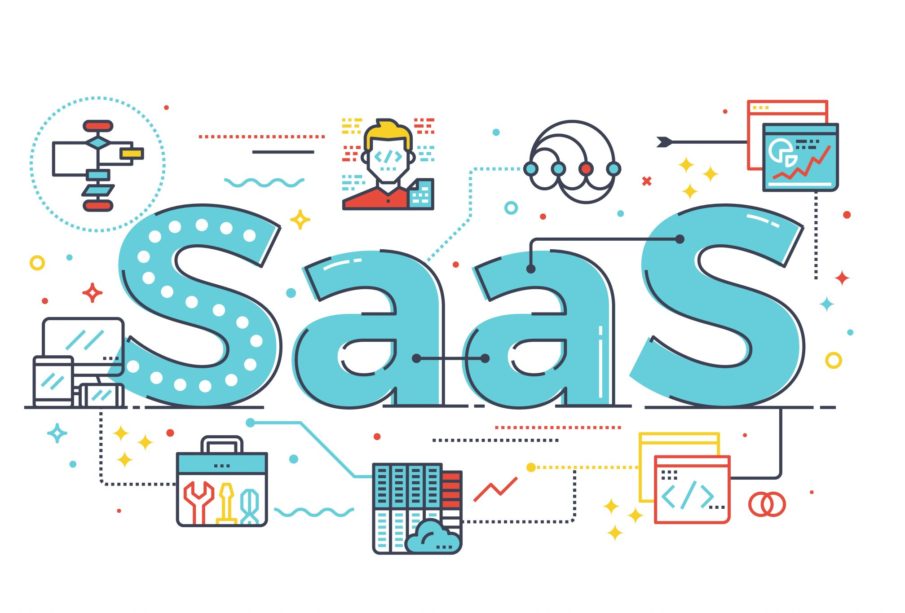Benefits Of SaaS Software

Digital tools and services for business can make the company’s work and communication with customers much more effective. But the development and support of software products is quite a laborious and expensive pleasure. To regularly update software or modify functionality to fit your own needs, sometimes you need a whole technical department within the company.
Software as a service or SaaS platform is a solution to this problem for users. This is a model of cooperation with software owners, where the software acts as a service, and the owner is a provider who independently provides services.
SaaS software – what is it
In the SaaS platform, you get access to the application functionality via the Internet for a paid subscription. The software itself is usually located on the developer’s server, which ensures the operability of the application, its regular updates and improvements.
A vivid example of this model in the B2C segment is the Google Docs service. We get at our disposal the functionality of a text editor using a browser. To do this, you do not need to specifically install the program on a working computer.
Examples from B2B are services of hosting providers, task schedulers, CRM, etc. Various types of software, the functionality of which is used by enterprises without being its owners.
For example, if a company buys a server for its own needs, and then hires an outsourcing specialist to support it, it will no longer be SaaS. The software and computing power of the server belong to the company, and the specialist simply provides its own services for its maintenance.
Nowadays, online services are becoming increasingly popular, while the competition in SaaS is quite low. Therefore, providing software as a service is a fairly promising option for starting your own online business.
Benefits of SaaS Software
Since the creation of the SaaS service as well as its support is exclusively the responsibility of the provider, the client eliminates the need to service it. The main advantages for the client include:
Low cost. The subscription fee for using this type of application is much lower than the cost of development and maintenance.
Simplicity. SaaS web interfaces can be used from any device. In order for all company employees to access it, you do not need to install software on all computers.
Time saving. The integration of this service and the training of employees will require only a few days.
All this makes this type of application popular among small and medium-sized businesses, as well as among ordinary Internet users. For the owner, SaaS provides the following benefits:
Regular income. This model is designed for continuous long-term cooperation with customers. Therefore, you get a steady stream of profit from all customers, instead of one-time payments.
Full control over software improvements and labor saving. Instead of simultaneous technical support of software for several clients at once, you make changes to applications centrally. You do not have to perform the same actions dozens of times.
Great coverage of Central Asia. Due to the speed of integration and simplicity, this type of application will be in higher demand in some areas than the software that needs to be installed.
Lower maintenance costs. If you provide additional services for your own customers or simplify your own service using SaaS, then you get a significant competitive advantage, and expand the number of regular customers.
But in order to create truly high-quality software that will be in demand, two key aspects are necessary:
Find qualified developers.
In other words, the idea should reinforce the results of consumer marketing research and market analysis. And the team that will create the service should have the skills both in development and in creating user interfaces, marketing and analytics.
SaaS Service Development Steps
We will consider in stages the entire process of creating SaaS services.
- Discussion of the project. You explain to specialists the goals for which the software is created, its functionality, what tasks the user will solve, etc.
- Predesign studies. Analysts are studying the market for which the service will be designed: available analogues (including programs for downloading), the needs of the target audience. After that, if necessary, supplement the concept with competitive advantages and give it for approval.
- Prototyping. Next, a prototype of the entire service is created, where the logic of its operation and the interface structure are schematically displayed.
- Software development. Specialists create the architecture of the project and implement all its functionality.
- Creating an interface design. The unique design of the application is drawn, taking into account the UI \ UX. In this case, experts are guided primarily by convenience for future users.
- Testing. A comprehensive performance check of the entire software product: various tools are tested, the integration with external services is correct, the quality of protection is checked, as well as the correct operation under various user interaction scenarios.
- Customer support and training. After the product is ready, development specialists teach the technical team of the client the basic features of the service.
When SaaS Applications Are Helpful
SaaS development can act as an additional tool for communication with the client, as well as an independent solution for startups. This type of service is most popular among small and medium-sized businesses (in B2B). If you work in the B2C sphere, then SaaS will be useful if the main segment of your target audience is users who prefer to quickly access the necessary functionality via the Internet than to download and install software.
Leave a reply
You must be logged in to post a comment.









